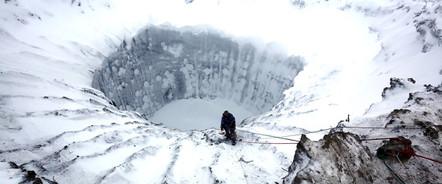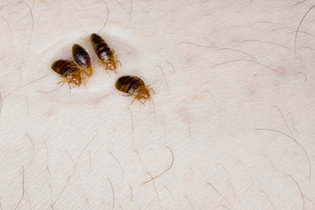 Huge New Holes In Siberia Have Scientists Calling For Urgent Investigation Of The Mysterious Craters "Scientists were baffled last July when they discovered three giant holes in the ground in Yamal Peninsula in northern Siberia. Now, with the help of satellite imagery, researchers have located ffour additional craters--and they believe there may be dozens more in the region." Through the use of satellite technology, scientists have recently uncovered three craters in the ground in the Yamal Peninsula in Siberia. Scientists are left wondering why and how these massive holes have formed and how they can predict if more will appear in the future. It is believed that the holes are the result of gas explosions prompted by a buildup of underground heat or the continual change in the Earth's climate. A crew has been sent out to study and photograph the holes and begin to unravel this mystery. Because gas explosions underneath the surface of the earth are unpredictable and dangerous, it is difficult for them to be studied. As a solution, scientists plan on setting up stations in the surrounding area to detect and track earthquakes that may follow as a result of the explosions. Author: Marcina Cooper-White Source: Huffington Post Link: http://www.huffingtonpost.com/2015/02/23/holes-siberia-investigation-safety_n_6736744.html?utm_hp_ref=science -Amelia Ekert Loyola University Maryland Scientista Website Publishing Chair
0 Comments
"In the closing sentence of “The Origin of Species,” Charles Darwin marvels at the process of evolution, observing how “from so simple a beginning endless forms most beautiful and most wonderful have been, and are being, evolved.” Few people would describe bedbugs as most beautiful or most wonderful. Yet this blood-feeding pest may represent an exceptional chance to observe the emergence of Darwin’s “endless forms”: New research indicates that some bedbugs are well on their way to becoming a new species."
This article gives readers a look into the evolution of bedbugs, from where they originated to their present residing and how they made the journey in between. Through the DNA of bedbugs, scientists have been able to track the movement of these bugs around the world and begin to figure out why we just can't seem to get rid of these pests altogether. Author: Carl Zimmer Source: New York Times Link: http://www.nytimes.com/2015/02/05/science/in-bedbugs-scientists-see-a-model-of-evolution.html?ref=science&_r=0 -Amelia Ekert Loyola University Maryland Scientista Website Publishing Chair |
Welcome, LUM Scientistas!The Loyola Scientista chapter is dedicated to providing every Loyola scientista with campus-related advice, news, articles, features and more. Browse through our website and join our mailing list to gain access to great resources and events!
CategoriesAll Meet The Team Opportunities Scientista Spotlight LUM Scientista PicsWhat's NewUpcoming EventsNew National ArticlesSubscribe To Our Mailing ListArchives
March 2015
|
The Scientista Foundation, Inc. All Rights Reserved © 2011-2021 | Based in NY | [email protected]
The Network for Pre-Professional Women in Science and Engineering
The Scientista Foundation is a registered 501(c)(3) -- Donate!
The Network for Pre-Professional Women in Science and Engineering
The Scientista Foundation is a registered 501(c)(3) -- Donate!



 RSS Feed
RSS Feed